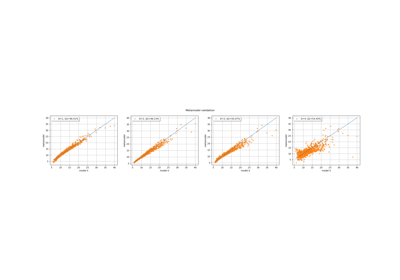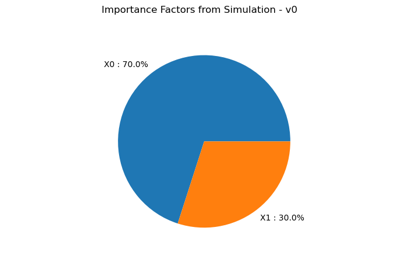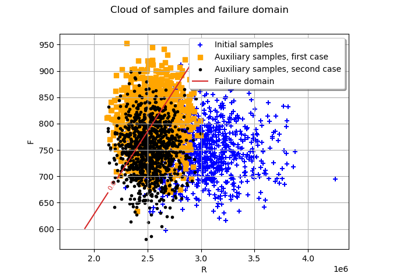LogNormalMuSigma¶
- class LogNormalMuSigma(*args)¶
LogNormal distribution parameters.
- Parameters:
- mufloat
The mean of the LogNormal random variable.
Default value is
.
- sigmafloat
The standard deviation of the LogNormal random variable, with
.
Default value is
.
- gammafloat, optional
Location parameter.
Default value is 0.0.
Methods
evaluate()Compute native parameters values.
Accessor to the object's name.
Get the description of the parameters.
Build a distribution based on a set of native parameters.
getName()Accessor to the object's name.
Accessor to the parameters values.
gradient()Get the gradient.
hasName()Test if the object is named.
inverse(inP)Convert to native parameters.
setName(name)Accessor to the object's name.
setValues(values)Accessor to the parameters values.
See also
Notes
Let
be a random variable that follows a LogNormal distribution such that:
The native parameters of
are
and
, which are such that
follows a normal distribution whose mean is
and whose variance is
. Then we have:
The default values of
are defined so that the associated native parameters have the default values:
.
Examples
Create the parameters of the LogNormal distribution:
>>> import openturns as ot >>> parameters = ot.LogNormalMuSigma(0.63, 3.3, -0.5)
Convert parameters into the native parameters:
>>> print(parameters.evaluate()) [-1.00492,1.50143,-0.5]
The gradient of the transformation of the native parameters into the new parameters:
>>> print(parameters.gradient()) [[ 1.67704 -0.527552 0 ] [ -0.271228 0.180647 0 ] [ -1.67704 0.527552 1 ]]
- __init__(*args)¶
- getClassName()¶
Accessor to the object’s name.
- Returns:
- class_namestr
The object class name (object.__class__.__name__).
- getDescription()¶
Get the description of the parameters.
- Returns:
- collection
Description List of parameters names.
- collection
- getDistribution()¶
Build a distribution based on a set of native parameters.
- Returns:
- distribution
Distribution Distribution built with the native parameters.
- distribution
- getName()¶
Accessor to the object’s name.
- Returns:
- namestr
The name of the object.
- gradient()¶
Get the gradient.
- Returns:
- gradient
Matrix The gradient of the transformation of the native parameters into the new parameters.
- gradient
Notes
If we note
the native parameters and
the new ones, then the gradient matrix is
.
- hasName()¶
Test if the object is named.
- Returns:
- hasNamebool
True if the name is not empty.
- inverse(inP)¶
Convert to native parameters.
- Parameters:
- inPsequence of float
The non-native parameters.
- Returns:
- outP
Point The native parameters.
- outP
- setName(name)¶
Accessor to the object’s name.
- Parameters:
- namestr
The name of the object.
- setValues(values)¶
Accessor to the parameters values.
- Parameters:
- valuessequence of float
List of parameters values.
Examples using the class¶

Apply a transform or inverse transform on your polynomial chaos
 OpenTURNS
OpenTURNS







